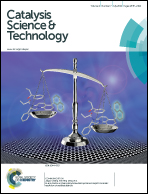Recent breakthroughs in aqueous cyclodextrin-assisted supramolecular catalysis
Abstract
During the past twenty years, cyclodextrins (CDs) have proven to be very effective in aqueous biphasic catalysis. They could act as molecular receptors for numerous organic substrates and favour their conversion at the aqueous/organic interface. Recently, new applications have been found for CDs in aqueous catalysis. CDs can now be defined as polyfunctional entities between the substrate-containing phase and the catalyst-containing phase. In this paper, we highlight the latest breakthroughs in the use of CDs in catalysis through several examples from the literature.


 Please wait while we load your content...
Please wait while we load your content...